Gum Grafting Bellevue
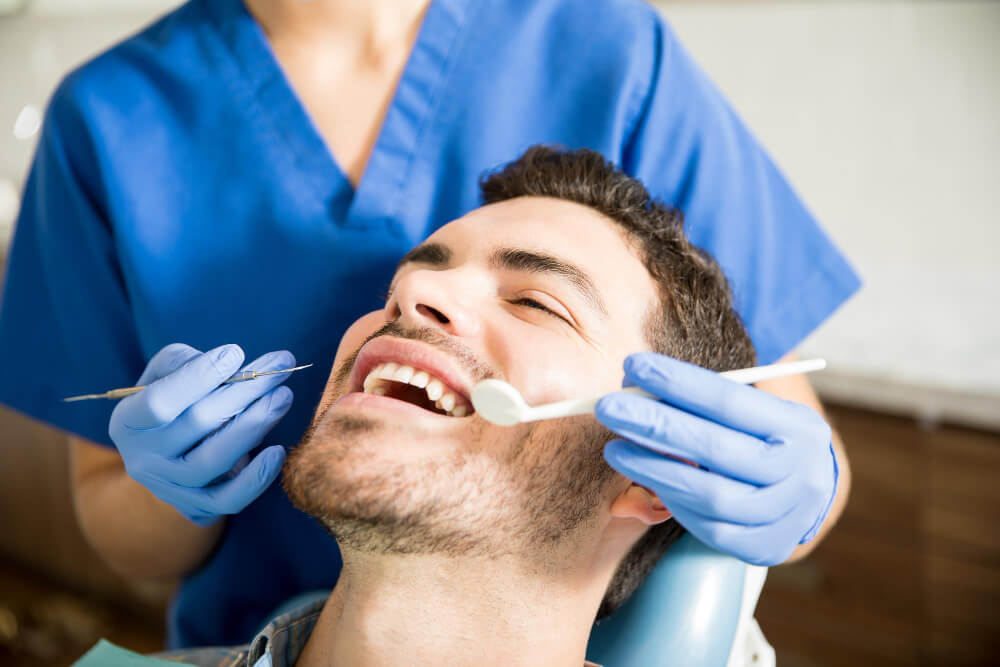
Gum Grafting Bellevue | Advanced Care with Dr. Javadi
If a cold sip of water sends a bolt of pain through your teeth or you’ve noticed a “long-tooth” smile in recent photos, you may be facing a gum recession. Exposed roots are far more likely to decay, and if left untreated, can lead to premature tooth loss.
At Orchid Periodontics & Dental Implants, board-certified periodontist Dr. Ellie Javadi offers gentle, high-success gum grafting surgery for Bellevue patients to restore comfort, protect roots, and revive confident smiles. Voted a Seattle Met “Top Dentist” for 2025 and backed by 20 years of advanced surgical experience, Dr. Javadi combines cone-beam CT imaging, ultra-fine microsutures, and IV or oral sedation to deliver predictable results with minimal downtime.
What Causes Gum Recession?
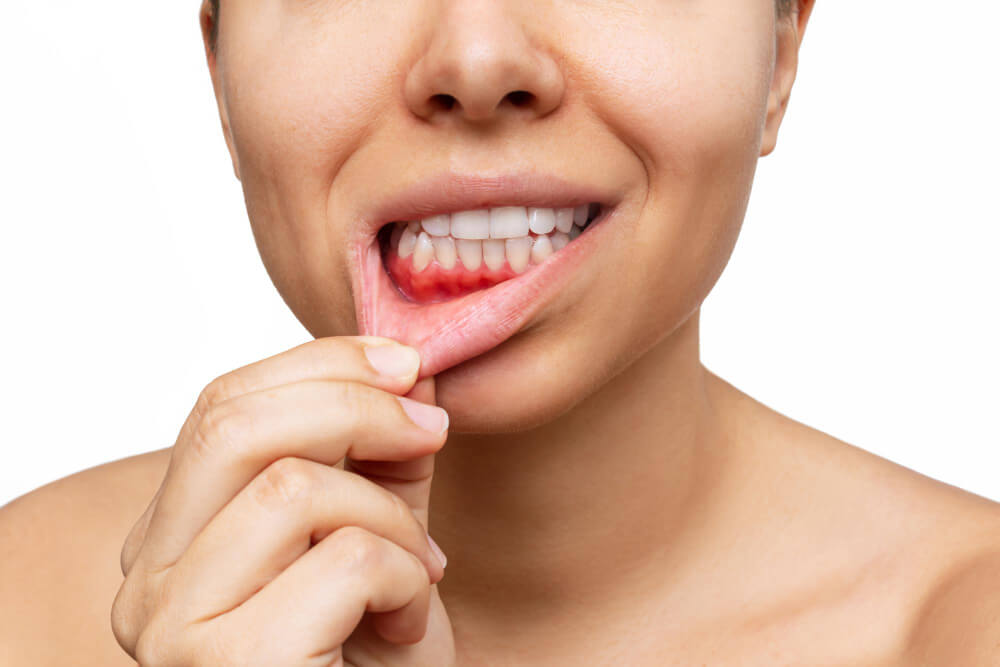
Gum recession doesn’t happen overnight; it often results from years of unnoticed damage. Whether from overbrushing, untreated gum disease, genetics, or even past orthodontic treatment, receding gums leave your tooth roots exposed and vulnerable.
Signs you may have gum recession:
- Tooth sensitivity to cold, heat, or sweets
- “Black triangles” or uneven gumlines in photos
- Inflammation that persists despite cleanings
- Deep pockets forming around affected teeth
Early intervention with gum grafting thickens fragile tissue and stops the recession cascade before decay or tooth loss occurs.
Gum Grafting Options in Bellevue
At Orchid Periodontics & Dental Implants, Dr. Javadi offers two proven grafting techniques. The best choice depends on the extent to which periodontal disease has progressed and the amount of root coverage required.
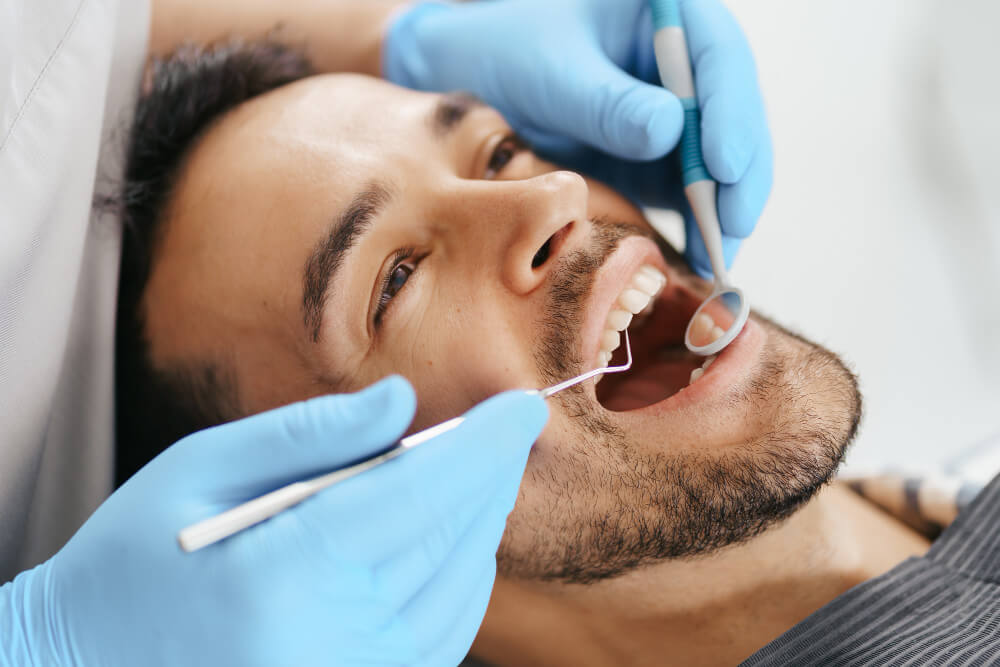
Gingival Graft for Early Recession
If you’re still in the early stage, where gums are simply thinning around the tooth neck, a gingival graft reinforces that fragile band. A slim strip of firm tissue is gently taken from the palate and sutured over the recessed area, immediately thickening the gum line and stopping further downward creep.
Soft-Tissue (Root-Coverage) Graft For Advanced Exposure
When recession has exposed the root surface or spans several teeth, a soft-tissue graft provides broader protection. Using either your own connective tissue or sterile, ready-to-use donor material, Dr. Javadi blankets the exposed roots to seal sensitive nerves, discourage tartar build-up, and help prevent future tooth loss.
Both procedures are completed under local anesthesia, with optional IV or oral sedation, and every graft is placed with ultra-fine microsutures to accelerate healing and keep you comfortable.
What to Expect During Your Gum Graft Procedure
Before starting with the treatment, Dr. Javadi performs a thorough clinical exam, reviews digital scans, and walks you through every grafting option so you know exactly why a specific technique is recommended for you.
- Comfort-First Anesthesia – A targeted local anesthetic completely numbs the area, and a tiny opening is prepared to receive the graft.
- Tissue Collection or Donor Prep – Either a paper-thin layer of your own connective tissue is gently taken from the palate, or pre-sterilized donor material is selected, whichever best suits your needs.
- Precise Graft Placement – The graft is contoured to match your recession pattern, then anchored over the exposed root with hair-fine microsutures that promote rapid, low-swelling healing.
- Post-Op Guidance & Direct Line – Before you head home, you’ll get step-by-step rinsing and diet instructions plus a direct phone number for any questions that arise during recovery.
Most patients finish in about 60–90 minutes and are back to routine desk work the very next day.
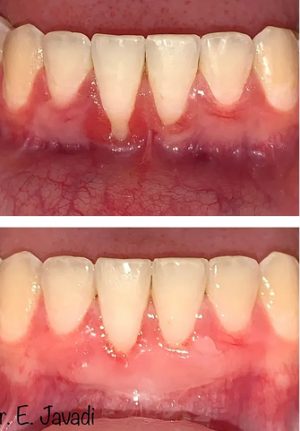
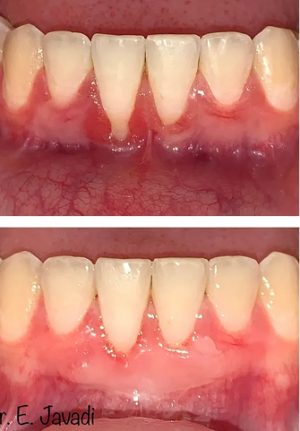
Recovery & Home-Care Tips
A smooth, complication-free recovery depends on a few simple habits you follow in the first week after surgery:
- Follow a soft-food diet for the first 5 to 7 days, choosing cool, non-spicy options such as yogurt, avocado, and smoothies to protect the graft while it stabilizes.
- Replace brushing at the surgical site with gentle rinsing using the antimicrobial mouthwash we provide, and resume careful brushing only after Dr. Javadi clears you at your follow-up visit.
- Maintain steady blood pressure by avoiding strenuous exercise or heavy lifting for 72 hours. However, light walking is encouraged to promote circulation.
- Manage discomfort with over-the-counter NSAIDs as directed, and use a small ice pack in 10-minute intervals on the first day to help limit swelling.
How Much Does Gum Grafting Cost In Bellevue
The gum grafting fees in Bellevue vary on a case-by-case basis. Your total cost depends on the severity of the recession, the number of teeth requiring coverage, the type of graft selected (a smaller gingival graft versus a broader soft-tissue graft), and whether any complementary procedures, such as deep scaling or minor bone contouring, are performed during the same visit. After her examination, Dr. Javadi issues a written, line-item estimate and submits a pre-determination to your insurer, so you’ll know your precise out-of-pocket share before scheduling treatment.
Book Your Bellevue Gum Graft Consultation
Root exposure only worsens over time. Don’t wait until sensitivity turns into tooth loss. Call Orchid Periodontics & Dental Implants today at (425) 775-2002 or book your consultation online to restore your smile’s protection.









Frequently Asked Questions
What is the average cost of gum grafting?
The gum grafting fees typically range from approximately $600 to $1,500 per tooth, depending on the number of teeth involved, the type of graft material used, and whether adjunct procedures (such as deep cleaning or bone contouring) are added. Insurance often covers a portion when recession is linked to periodontal disease.
When is it too late for a gum graft?
As long as the tooth still has adequate supporting bone and is not hopelessly mobile, grafting is usually possible. It becomes “too late” only if severe bone loss or advanced infection has already made the tooth non-savable, at which point extraction or other therapies are considered.
How urgent is gum graft surgery?
Gum recession itself isn’t an emergency, but delaying treatment allows the roots to remain exposed, increasing the risk of decay, sensitivity, and further tissue loss. Scheduling the graft within a few months of diagnosis generally prevents those complications and yields the most predictable results.
Do dentists recommend gum grafts?
Yes. Periodontists and general dentists routinely recommend grafting when recession threatens root health, aesthetics, or future orthodontic or implant plans. The procedure thickens fragile tissue, covers exposed roots, and helps stabilize the gum line long term.
Contact us
Contact us using the information below. We’ll respond promptly to your inquiries and feedback
Hours of Operation
Our Regular Schedule
- MondayClosed
- Tuesday7:00 am - 3:00 pm
- wednesday7:00 am - 3:00 pm
- Thursday7:00 am - 3:00 pm
- FRIDAY1st & 3rd Friday of the month
- SaturdayClosed
- SundayClosed